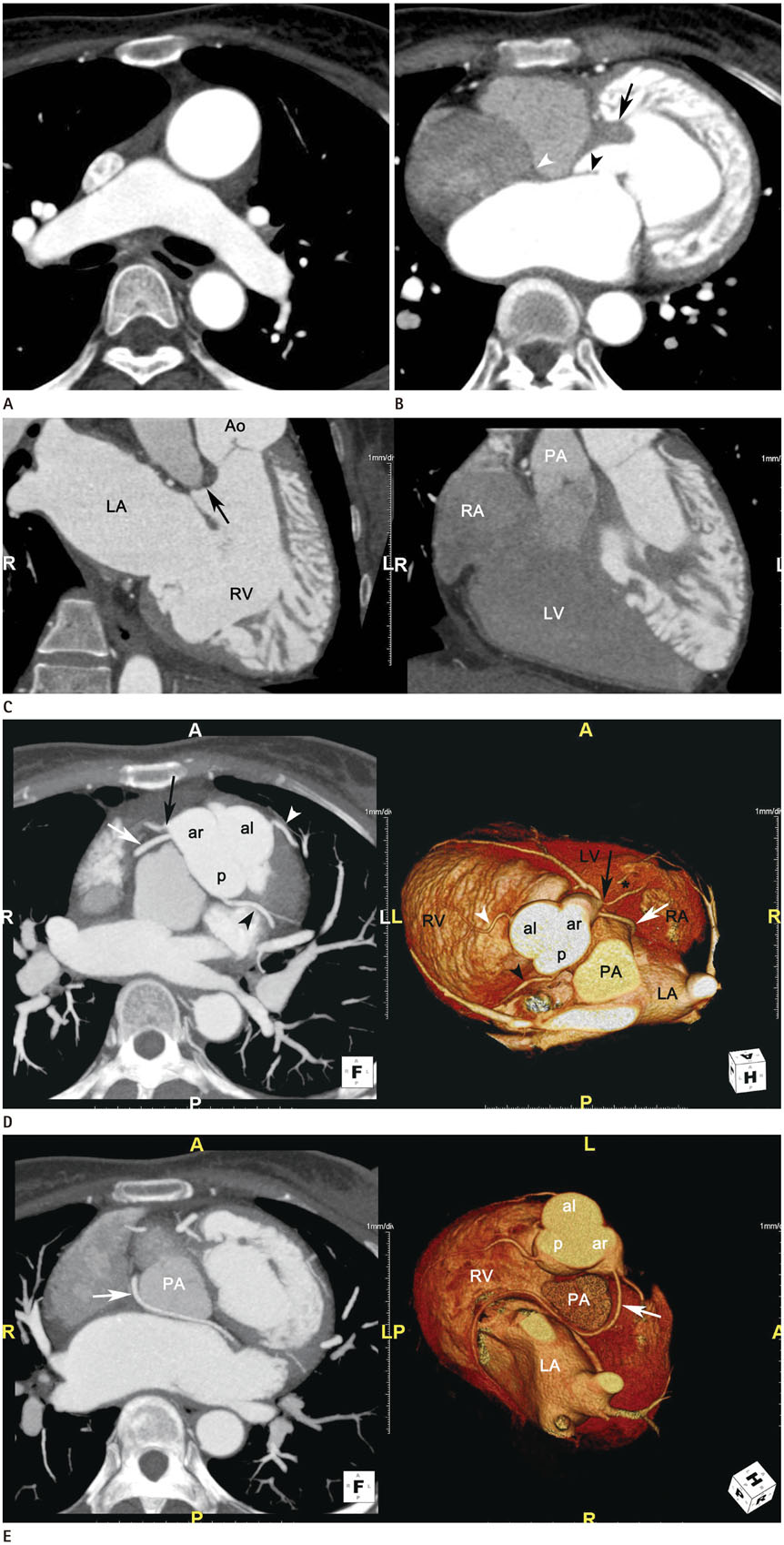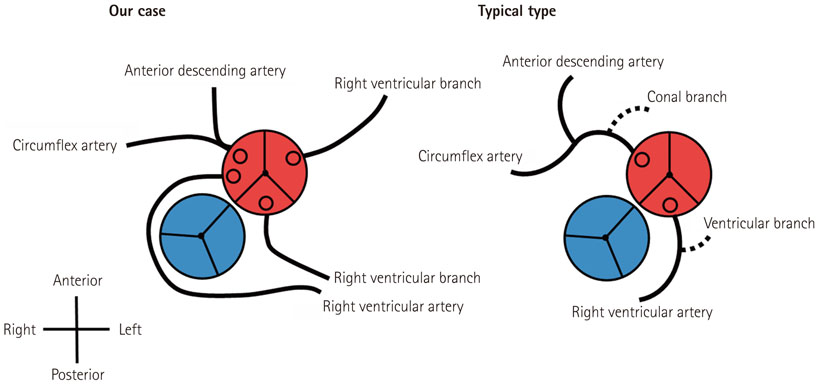J Korean Soc Radiol.
2016 Jul;75(1):62-67. 10.3348/jksr.2016.75.1.62.
An Unreported Type of Coronary Artery Anomaly in Congenitally Corrected Transposition of Great Arteries
- Affiliations
-
- 1Department of Radiology, Medical Research Institute, Pusan National University Hospital, Busan, Korea. jw@pusan.ac.kr
- 2Department of Internal Medicine, Medical Research Institute, Pusan National University Hospital, Busan, Korea.
- KMID: 2327369
- DOI: http://doi.org/10.3348/jksr.2016.75.1.62
Abstract
- Coronary artery variations are associated anomalies in 45% of congenitally corrected transposition of the great arteries (ccTGA) cases, and it is important to detect any coronary artery anomalies before cardiac surgery. We report a case of a 51-year-old woman with ccTGA and an unreported type of coronary artery anomaly.
MeSH Terms
Figure
Reference
-
1. Wallis GA, Debich-Spicer D, Anderson RH. Congenitally corrected transposition. Orphanet J Rare Dis. 2011; 6:22.2. Warnes CA. Transposition of the great arteries. Circulation. 2006; 114:2699–2709.3. Huang SC, Chiu IS, Lee ML, Wu CS, Chiu HH, Chang CI, et al. Coronary artery anatomy in anatomically corrected malposition of the great arteries and their surgical implications. Eur J Cardiothorac Surg. 2011; 39:705–710.4. Ismat FA, Baldwin HS, Karl TR, Weinberg PM. Coronary anatomy in congenitally corrected transposition of the great arteries. Int J Cardiol. 2002; 86:207–216.5. Friedberg DZ, Nadas AS. Clinical profile of patients with congenital corrected transposition of the great arteries. A study of 60 cases. N Engl J Med. 1970; 282:1053–1059.6. Malhotra S, Patel RN, Mandawat M. A case of congenitally corrected transposition of the great arteries with rare but life-threatening ventricular tachycardia and a coincidental single coronary ostium. J Invasive Cardiol. 2007; 19:E139–E141.7. Karl TR. The role of the fontan operation in the treatment of congenitally corrected transposition of the great arteries. Ann Pediatr Cardiol. 2011; 4:103–110.8. Sithamparanathan S, Padley SP, Rubens MB, Gatzoulis MA, Ho SY, Nicol ED. Great vessel and coronary artery anatomy in transposition and other coronary anomalies: a universal descriptive and alphanumerical sequential classification. JACC Cardiovasc Imaging. 2013; 6:624–630.9. Kantarci M, Koplay M, Bayraktutan U, Gundogdu F, Ceviz N. Congenitally corrected transposition of the great arteries: MDCT angiography findings and interpretation of complex coronary anatomy. Int J Cardiovasc Imaging. 2007; 23:405–410.10. Chiu IS, Wu SJ, Chen SJ, Wang JK, Wu MH, Lue HC. Sequential diagnosis of coronary arterial anatomy in congenitally corrected transposition of the great arteries. Ann Thorac Surg. 2003; 75:422–429.
- Full Text Links
- Actions
-
Cited
- CITED
-
- Close
- Share
- Similar articles
-
- Transposition of the Great Arteries: Historical Background
- A Case Report of Congenitally Corrected Transposition of Great Arteries: Morphologic and Functional Evaluation with Cardiac CT
- An Adult Case of Congenitally Corrected Transposition of the Great Arteries Associated with Paroxysmal Atrial Fibrillation and Heart Failure
- Q waves in congenitally corrected transposition of the great arteries
- Coronary Angiography in an Adult Case of lsolated Congenitally Corrected Transposition of the Great Vessels



